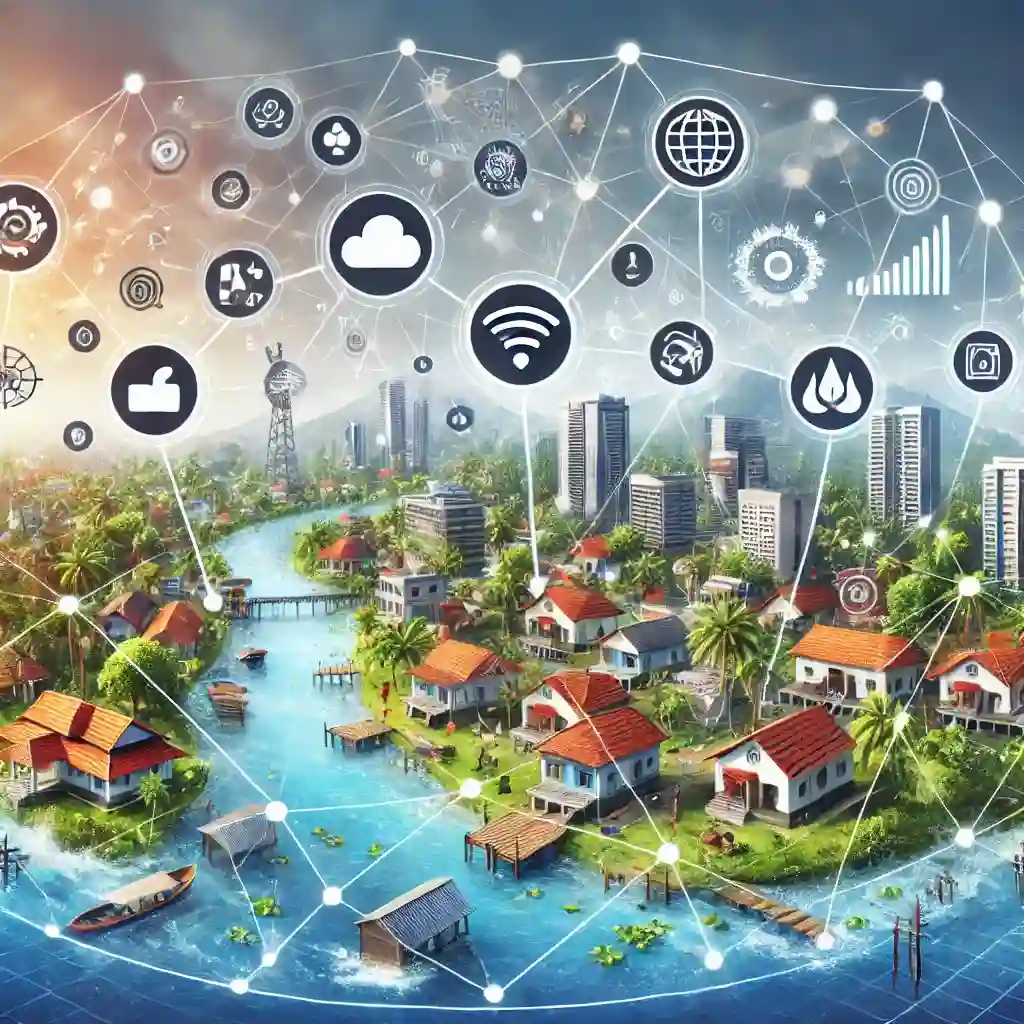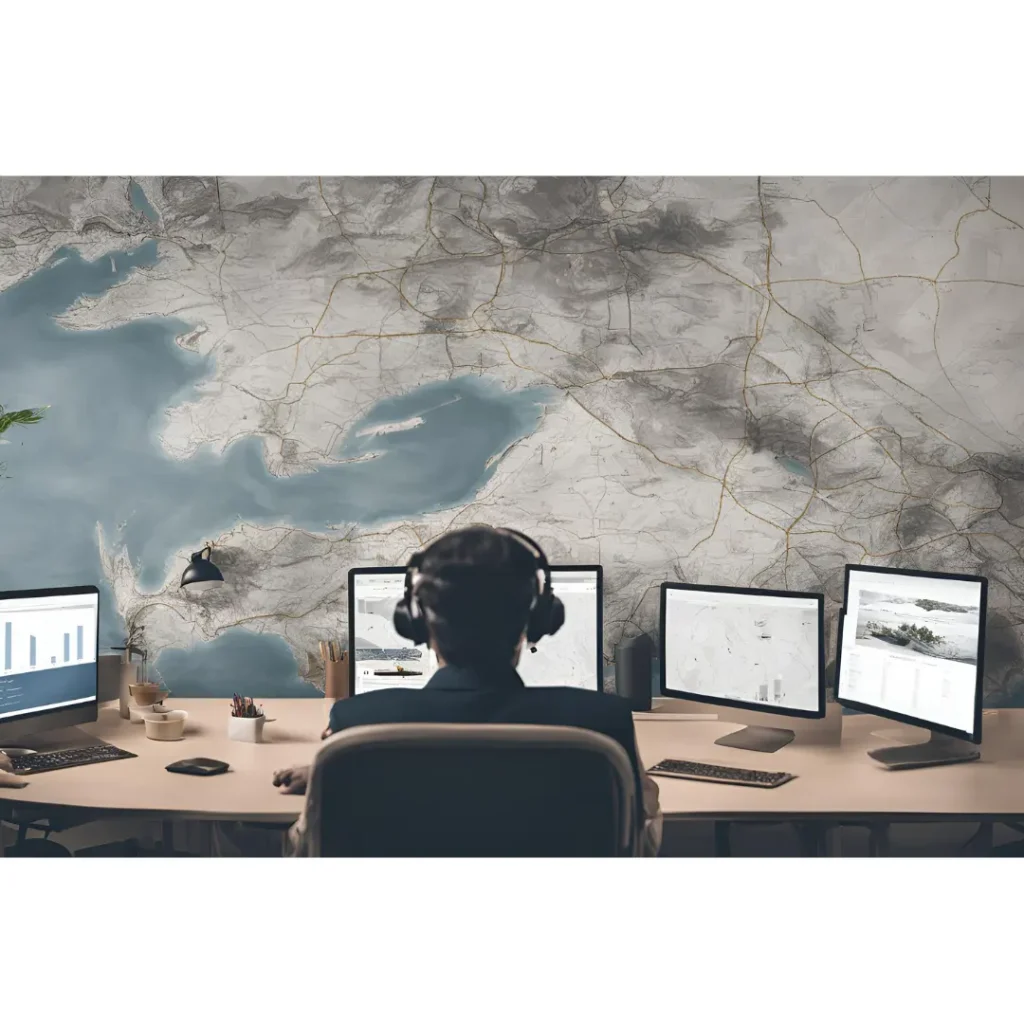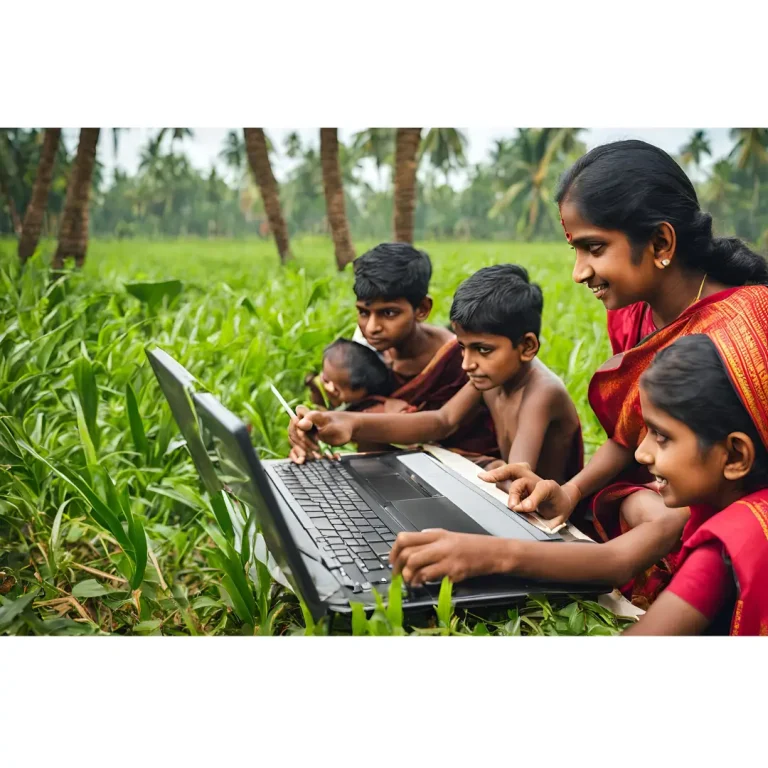Digital Marketing: A Catalyst for Change in Kerala’s Disaster Management
Kerala, a state renowned for its natural beauty and rich biodiversity, has also been at the forefront of battling with the complexities of nature and faces significant challenges related to natural disaster management. The Western Ghats, while a breathtaking landscape, has also been a source of challenges, with the Mullaperiyar dam issue adding to the state’s vulnerability to natural disasters. The devastating landslides in Wayanad and the pressing concerns highlighted by the Gadgil Report further underscored the need for strong disaster management strategies. In this complex scenario, digital marketing emerges as a powerful tool that can drive positive changes in disaster management.
Understanding the Challenges and Their Impact
1. The Western Ghats: A Double-Edged Sword
The Western Ghats, a breathtaking landscape stretching along the eastern border of Kerala, are a UNESCO World Heritage site and a hotspot for biodiversity. However, this region is also prone to landslides, floods, and deforestation. The ecological balance is delicate, and any disruption can lead to significant environmental and infrastructural impacts. Its ecological health is crucial for maintaining water cycles and preventing soil erosion, vital for the state’s agriculture and water resources.
2. The Mullaperiyar Dam Controversy
The Mullaperiyar Dam, situated on the Periyar River of the Idukki district in Kerala, is a subject of continuing tension between Kerala and Tamil Nadu. Built over a century ago, the dam’s safety has been a concern due to its aging infrastructure and the seismic activity in the region. If the dam were to fail or there was a significant breach, it could lead to catastrophic flooding in both Kerala and Tamil Nadu, affecting millions of lives. The potential impact of such an event underscores the importance of robust safety measures and public awareness.
3. Recent Landslides in Wayanad
Wayanad, a district in Kerala’s northern region, has witnessed severe landslides due to heavy rains and deforestation. These landslides have led to loss of lives, property damage, and disruption of essential services. The frequency and intensity of such events highlight the need for effective early warning systems and community preparedness.
4. Eco-Sensitive Zones and the Gadgil Report
The Gadgil Report, a comprehensive assessment of the Western Ghats’ ecological status, emphasizes the need for conservation and sustainable development. It suggests designating certain areas as eco-sensitive zones to protect the environment and biodiversity. Implementing these recommendations requires widespread public support and understanding, which digital marketing can help create.
The Role of Digital Marketing in Disaster Management
Beyond its commercial applications, digital marketing is emerging as a potent tool in crisis management and community building. Its ability to reach a vast audience instantly, coupled with its capacity to mobilize resources, makes it indispensable in disaster relief efforts. Digital marketing can be a game-changer in disaster management.

1. Real-time Communication:
- Social Media as a Lifeline: Platforms like Facebook, Twitter, and Instagram can communicate real-time updates, warnings, evacuation plans, and safety guidelines.
- WhatsApp and SMS: These channels can be employed for targeted communication and alerts.
- Geolocation Tools: Precise location data can be utilized to provide targeted information to affected areas.
2. Crowd-Sourcing Information:
- Social Listening: Monitoring social media for distress calls, requests for help, and information sharing.
- Citizen Reporting: Encourage people to share videos, and information about the situation and direct accounts to aid in relief efforts.
3. Resource Mobilization:
- Crowdfunding Platforms: Utilizing platforms to raise funds for relief efforts.
- Volunteer Management: Digital platforms can be used to connect volunteers with organizations in need.
- Supply Chain Management: Optimizing logistics and distribution of relief materials using digital platforms.
4. Early Warning Systems:
- Data Analytics: Analyzing social media data to identify patterns and trends for effective response. Use historical data and AI to predict potential disaster zones.
- Risk Mapping: Creating digital maps highlighting vulnerable areas and interactive maps identifying areas requiring immediate assistance.
- Early Warning Communication: Utilizing digital channels to reach people before disaster strikes.
5. Post-Disaster Recovery and Rehabilitation:
- Digital Documentation: Using digital platforms to document damages for insurance and government assistance.
- Community Building: Building online groups for support and recovery.
- Economic Revival: Digital marketing can be used to promote affected regions and support local businesses.
- Long-Term Planning: Using data analytics to identify vulnerabilities and develop preventive measures.

How Digital Marketing Can Drive Positive Change
1. Raising Awareness and Educating the Public:
Digital marketers can create various platforms to raise awareness. Social media, blogs, and websites can be used to share information about:
- The Importance of the Western Ghats: Highlighting the role of the Western Ghats in maintaining ecological balance and promoting conservation efforts.
- Mullaperiyar Dam Safety: Educate the public about the current status of the dam, emergency procedures, and ongoing safety measures.
- Landslide Prevention and Safety Measures: Providing tips and guidelines for communities living in landslide-prone areas.
- Eco-Sensitive Zones and Sustainable Practices: Promoting the benefits of eco-sensitive zones and supporting sustainable development practices.
2. Developing Interactive Platforms for Real-Time Updates
Creating mobile apps and websites that provide real-time updates on weather conditions, dam statuses, and emergency alerts.
- Emergency Contact Information: Providing users with contact details of local authorities and emergency services.
- Evacuation Routes and Safety Tips: Offering clear instructions on evacuation routes and safety measures during disasters.
- Community Reporting: Allowing users to report local conditions, such as landslides or flooding, to help authorities respond more effectively.
3. Promoting Community Engagement and Preparedness:
Digital marketing can facilitate community engagement by creating campaigns that encourage proactive measures.
- Preparedness Drills: Organizing virtual or local disaster drills for preparedness and encouraging community participation.
- Volunteering Opportunities: Promoting opportunities for volunteering and contributing to disaster relief efforts.
- Crowdsourcing Initiatives: Utilizing crowdsourcing to gather data on local conditions and needs during disasters.
4. Encouraging Unity:
Disaster management efforts are most effective when communities work together, regardless of caste, religion, or gender. Digital marketing can play a key role in promoting inclusivity and unity by:
- Highlighting Success Stories: Showcasing examples of diverse communities working together to overcome challenges and support each other during disasters.
- Promoting Inclusive Messaging: Creating messages that emphasize common goals and shared responsibilities, rather than divisions.
- Educational Campaigns: Running campaigns that focus on the importance of unity and collaboration in disaster preparedness and recovery.
5. Supporting Sustainable Practices and Conservation:
Digital marketing can support the implementation of the Gadgil Report’s recommendations by:
- Educational Content: Creating content that explains the importance of eco-sensitive zones and sustainable practices for preserving the Western Ghats.
- Campaigns for Conservation: Running campaigns to support local conservation projects and encourage community involvement in environmental protection.
- Partnerships with NGOs: Collaborating with environmental NGOs to amplify their messages and reach a wider audience.
The Mullaperiyar Dam Crisis: A Case Study
The Mullaperiyar dam issue has highlighted the need for effective communication and collaboration between Kerala and Tamil Nadu. Digital platforms can facilitate dialogue, share data, and build trust between the two states. By creating awareness about the ecological sensitivity of the region and the potential risks, digital marketing can contribute to finding a sustainable solution.
The Wayanad Landslides: A Call to Action
The Wayanad landslides underscored the importance of early warning systems and disaster preparedness. Digital marketing can play a crucial role in communicating information about landslide-prone areas, educating the public about safety measures, and promoting sustainable land use practices.
Building a Resilient Kerala: The Role of Digital Literacy
In disaster management, to maximize the benefits of digital marketing, it’s essential to invest in digital literacy. Empowering communities with digital skills will enable them to access information, participate in relief efforts, and contribute to long-term recovery.

Challenges and Opportunities
While digital marketing offers immense potential, challenges such as the digital divide, misinformation, and cybersecurity need to be addressed. However, with a strategic approach and ethical considerations, digital marketing can be a powerful tool for building a resilient Kerala. We can create a more disaster-resilient future, by combining technology with human empathy.
Conclusion
While natural disasters may remain unpredictable, our response to them does not have to be reactive. By taking deliberate and informed steps now, we can build a culture of preparedness and resilience. The efforts we make today, guided by the strategic use of digital marketing, can lead to a safer and more unified community, better equipped to handle the uncertainties of tomorrow.
We can also support sustainable practices and conservation efforts that align with the recommendations of the Gadgil Report, thereby contributing to long-term ecological health and reducing future disaster risks. Digital marketers can significantly contribute to disaster preparedness, response, and management through targeted campaigns, educational content, and community engagement ultimately bringing about positive changes.
Digital marketing is not just about sales and promotions; it’s about using technology as a force for good. By utilizing the power of digital platforms, we can create a more informed, prepared, and resilient Kerala.
👍
Thank you